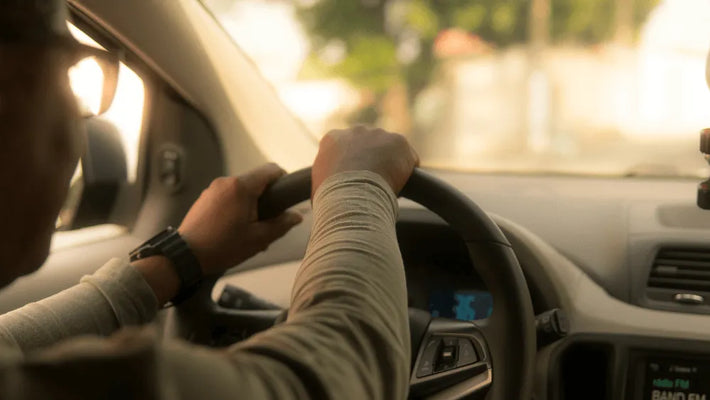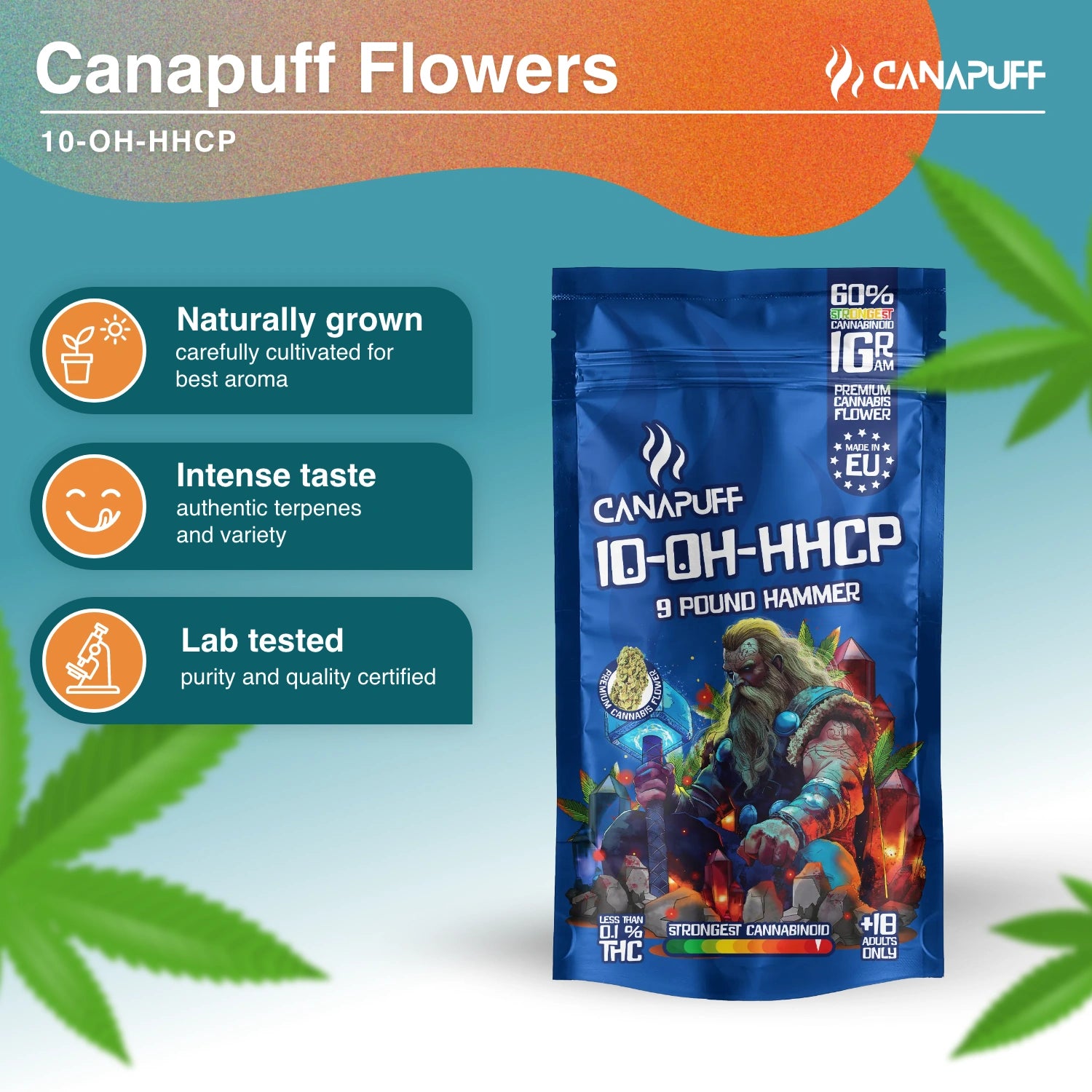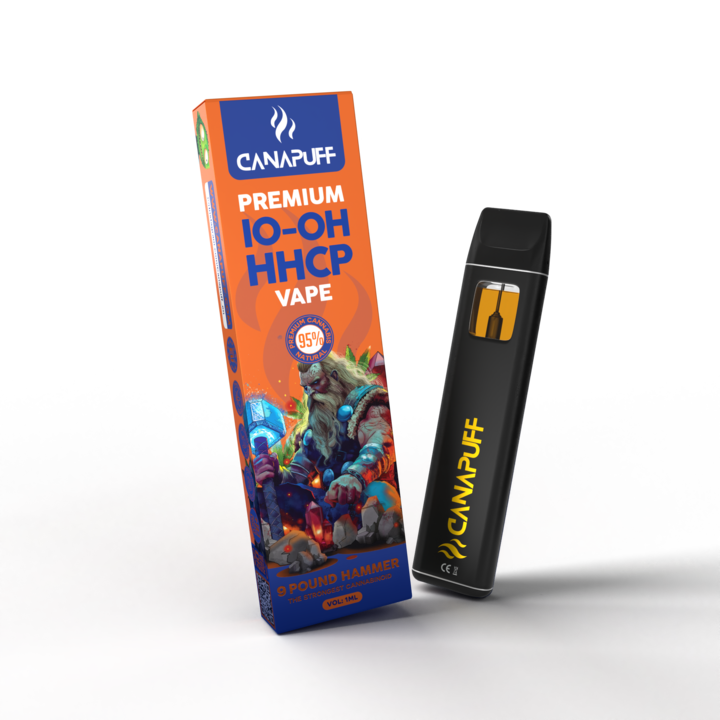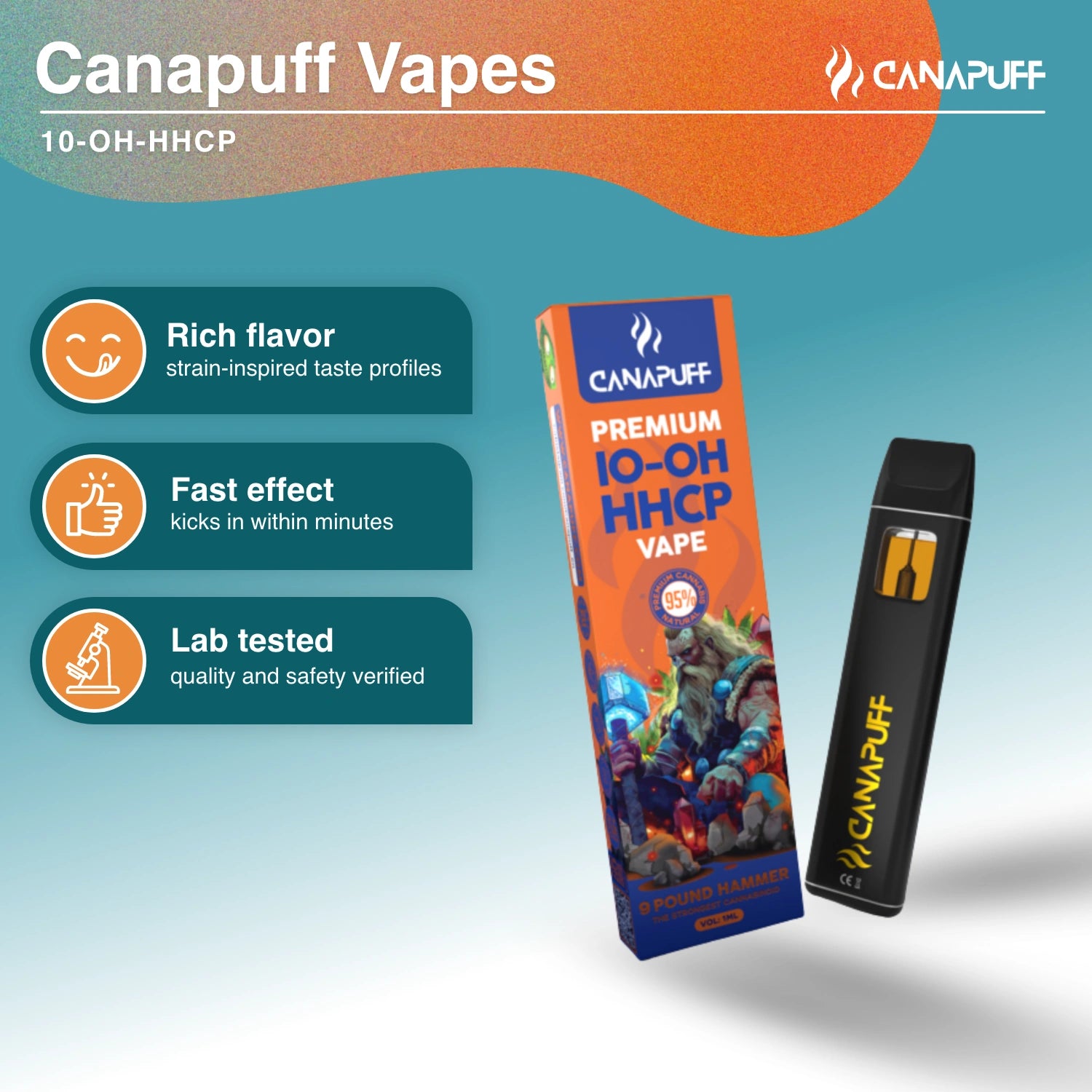The cannabis industry's latest innovation, CB9, brings fresh challenges, especially in areas like driving safety and drug testing. This new cannabinoid, emerging from the shadows of CBD, offers psychoactive properties that could potentially affect driving abilities, presenting a significant safety concern. Unlike the clear regulations surrounding THC, CB9's effects on driving performance remain less understood, complicating the enforcement of safe driving standards.
Moreover, CB9 poses a unique challenge for drug testing protocols. Traditional tests tailored to detect THC may not accurately identify CB9, leading to potential issues in legal and employment contexts where drug-free policies are enforced. This detection gap underscores the need for updated testing methods that can accurately reflect the nuances of emerging cannabinoids like CB9.
The legal landscape around CB9 adds another layer of complexity. With cannabis laws continually evolving, CB9's legal status varies, leaving individuals and authorities in a grey area. This uncertain legal framework necessitates clear guidelines to ensure public safety on the roads and in the workplace, balancing the innovative strides of the cannabis industry with the imperative to maintain safety and legal clarity.
CB9's Psychoactive Profile: A Caution for Drivers
Understanding CB9's Mild Psychoactive Effects
The introduction of CB9, a psychoactive cannabinoid that evolves from CBD, into the market has sparked a notable interest in understanding its specific effects on individuals, especially in contexts requiring high levels of cognitive function and motor skills, such as driving. The distinct yet mild psychoactive nature of CB9, characterized by feelings of euphoria and relaxation, distinguishes it from its precursor CBD, known for its non-psychoactive, therapeutic benefits.
The nuanced psychoactive profile of CB9 raises crucial concerns regarding its potential to impair driving abilities. Driving, a complex task demanding undivided attention, quick decision-making, and precise motor coordination, could be significantly impacted by any substance that alters mental state or physical responsiveness. Even mild psychoactive effects, such as those attributed to CB9, might subtly impair cognitive functions critical for safe driving. This impairment could manifest in delayed reaction times to unexpected events on the road, decreased ability to focus on complex or dynamic driving environments, and impaired judgment in traffic situations requiring rapid assessment and response.
Furthermore, the sensation of relaxation, while beneficial in many contexts, could potentially reduce a driver's alertness levels, leading to slower responses to hazards. The mild euphoria associated with CB9 might also affect drivers' risk perception, possibly leading to underestimation of speed, distances, or the seriousness of potential dangers on the road.
Given these considerations, it becomes evident that the use of CB9, especially before or while driving, warrants careful scrutiny. Research into the specific effects of CB9 on driving performance is essential to establish clear guidelines and recommendations for its safe use. This research should aim to quantify the extent of impairment CB9 may cause and determine how long after consumption its effects might influence driving ability. Such information is crucial for informing policy, guiding law enforcement, and educating the public about the risks associated with driving under the influence of CB9.
As the legal and social landscapes around cannabis and its derivatives continue to evolve, understanding the implications of consuming new cannabinoids like CB9 becomes increasingly important. For individuals who use CB9, awareness of its potential effects on driving is vital for making informed decisions about when and how to consume it safely. For authorities and policymakers, this knowledge is key to developing regulations that protect public safety without unduly restricting the benefits that cannabinoids can offer.
The Risks of Driving Under the Influence of CB9
The concern surrounding CB9's impact on driving safety is rooted in its psychoactive effects, which, even if mild, can pose significant risks on the road. The ability to drive safely relies on a complex interplay of cognitive functions, including attention, reaction speed, decision-making, and motor coordination. Any impairment, even slight, can disrupt this balance, potentially leading to unsafe driving conditions.
The mild euphoria and relaxation attributed to CB9, while seemingly innocuous or even beneficial in non-driving contexts, could dull critical driving faculties. For instance, a driver experiencing relaxation might react slower to a sudden stop from the car ahead, or someone feeling mildly euphoric may misjudge distances or overlook important road signs. This subtle impairment challenges the notion that only strong psychoactive effects are a concern for driving safety.
Therefore, it's imperative for CB9 users to exhibit awareness and caution, especially when planning to drive. Understanding the timing and duration of CB9's effects is crucial for determining when it might be safe to get behind the wheel after consumption. This knowledge not only protects the user but also safeguards other road users and pedestrians from the potential consequences of impaired driving.
Given these considerations, promoting education about the effects of CB9 and similar substances on driving abilities becomes a priority. Drivers should be informed about the risks associated with psychoactive cannabinoids and encouraged to make responsible choices about their consumption in relation to driving. Additionally, further research into CB9's specific impact on driving performance could help inform more precise guidelines and recommendations, ensuring that users have the information they need to prevent impairment and maintain road safety.
Drug Testing: CB9 Detection Challenges
The Challenge of Detecting CB9 in Standard Tests
CB9's emergence introduces a new challenge to the standard drug testing protocols primarily designed to detect THC. The unique structural characteristics of CB9 mean that it might not be identified by these THC-centric tests, potentially leading to inaccuracies in drug screening outcomes. This situation can create significant complications, particularly in environments where drug testing is a legal or employment requirement.
In legal contexts, the inability of standard tests to accurately detect CB9 could lead to wrongful accusations or dismissals of substance use violations. Similarly, in the workplace, employees using CB9 could unknowingly violate company policies on drug use if these policies are based on test results that cannot distinguish between CB9 and other cannabinoids like THC.
This detection gap underscores the need for the development of more sophisticated drug testing methods. Such methods would need to be sensitive and specific enough to differentiate between various cannabinoids, including CB9, ensuring that individuals are not unfairly penalized for using a substance that might be legal in their jurisdiction. Moreover, it calls for an update in legal and employment policies to adapt to the evolving landscape of cannabinoid use, recognizing the distinctions between different substances and their varying legal statuses.
The implications of CB9's unique profile extend beyond the immediate concerns of drug testing accuracy. They highlight broader issues in the ongoing conversation about cannabis legalization, regulation, and the societal understanding of drug impairment and safety. As the cannabis industry continues to innovate, with new cannabinoids like CB9 entering the market, there's a clear need for public policies, workplace rules, and drug testing technologies to evolve in tandem, ensuring they accurately reflect the complexities of modern cannabinoid use.
Legal and Regulatory Implications for Drivers
Navigating CB9's Evolving Legal Status
Navigating the legal status of CB9 is akin to charting a course through unmarked waters, as regulations around this novel cannabinoid vary significantly across different regions. The ambiguity surrounding CB9's legal classification arises from its psychoactive properties and its derivation from CBD—a substance that has seen a global shift towards acceptance and legalization in many jurisdictions, yet remains tightly controlled in others.
For drivers and users of CB9, this legal patchwork presents a challenge: staying on the right side of the law requires a keen understanding of local regulations governing cannabis and its derivatives. In some areas, CB9 might be treated with the same leniency as CBD, allowed for use under specific conditions, or not regulated. In contrast, other regions might classify it alongside more strictly controlled substances due to its psychoactive effects, despite them being milder compared to those of THC.
The evolving nature of cannabis laws, reflecting ongoing research, societal attitudes, and political debates, means that the legal status of cannabinoids like CB9 can change. For individuals using CB9, whether for therapeutic reasons, recreational purposes, or both, it's essential to stay informed about the latest legal developments in their area. This vigilance helps prevent unintentional legal infractions that could arise from the use, possession, or driving under the influence of CB9.
Legal ambiguity also underscores the need for clear communication from policymakers and regulatory bodies. As new cannabinoids continue to enter the market, creating comprehensive and adaptable legal frameworks will be key to ensuring public safety while accommodating the potential benefits of these substances. For now, CB9 users must navigate this shifting landscape with caution, seeking reliable sources of information to ensure their use of this cannabinoid aligns with the laws of their locality.
The Need for Clear Guidelines and Legislation
The emergence of CB9 as a psychoactive cannabinoid with unique properties necessitates a careful approach to legislation and public safety guidelines, especially concerning driving. For regulatory authorities and lawmakers, the challenge lies in balancing the need to accommodate the potential benefits of CB9 within a legal framework that prioritizes road safety and public health.
Clear guidelines and legislation specific to CB9 are crucial for several reasons:
- Preventing Legal Ambiguity: Without specific regulations addressing CB9, users and law enforcement alike face uncertainty. This can lead to inconsistent enforcement and confusion over legal consequences for driving under the influence of CB9.
- Ensuring Public Safety: Establishing clear thresholds for impairment, akin to those for alcohol and THC, could help define safe levels of CB9 consumption in relation to driving. This ensures that drivers understand the risks and legal implications of driving after using CB9.
- Promoting Responsible Use: By delineating legal boundaries and safe use guidelines, authorities can encourage responsible CB9 consumption. Clear communication about the effects of CB9, its legal status, and safe usage guidelines can aid in preventing misuse and potential accidents on the road.
Developing these guidelines involves a multi-faceted approach, incorporating scientific research on CB9's effects on cognitive and motor functions, legal expertise to navigate the complexities of cannabinoid regulation, and public health considerations to mitigate risks associated with impaired driving. Collaboration between scientists, legal experts, policymakers, and community stakeholders is essential to create an informed, adaptable, and effective regulatory framework for CB9.
Such legislation should also be flexible enough to adapt to new research findings and societal changes. As our understanding of CB9 and its impacts evolves, so too should the laws and guidelines governing its use. This proactive, evidence-based approach to regulation will help safeguard public health and safety while allowing individuals to navigate the legal landscape of cannabinoid use with confidence.
Final Thoughts
The introduction of CB9 into the cannabis landscape presents a complex tapestry of considerations for users, lawmakers, and safety officials alike. As a psychoactive cannabinoid with roots in CBD, CB9's emergence challenges existing frameworks around driving safety, drug testing, and legal regulation. Its mild psychoactive effects, while offering potential therapeutic and recreational benefits, necessitate a heightened awareness around driving, underscoring the importance of understanding and adapting to its effects for road safety.
The difficulties in detecting CB9 with standard THC-focused drug tests highlight a significant gap in current drug screening methodologies. This gap not only complicates legal and employment situations but also points to the urgent need for advances in testing technologies that can accurately identify and differentiate cannabinoids like CB9. As the legal status of CB9 remains fluid across different jurisdictions, individuals are urged to stay informed about their local cannabis laws to navigate the legal complexities surrounding its use.
The evolving scenario calls for a collaborative effort among scientists, legal experts, and policymakers to develop clear, evidence-based guidelines and legislation that address the unique challenges posed by CB9 and similar cannabinoids. This includes establishing specific impairment thresholds, refining drug testing protocols, and ensuring public policies reflect the nuances of cannabinoid pharmacology and its implications for public health and safety.
In conclusion, CB9's entry into the market underscores the dynamic nature of cannabis research and its regulatory challenges. As our understanding of CB9 grows, so too must our approaches to ensuring safe use, accurate detection, and fair legal treatment evolve. Balancing innovation in cannabis with public safety and legal clarity will be key to navigating the future of cannabinoids like CB9 in society.





















Leave a comment
This site is protected by hCaptcha and the hCaptcha Privacy Policy and Terms of Service apply.